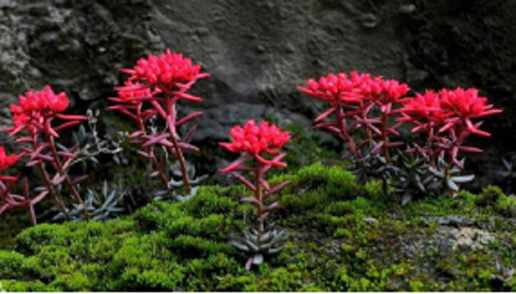China Cheap price Rhodiola Rosea Extract Manufacturer in United States
China Cheap price Rhodiola Rosea Extract Manufacturer in United States Detail:
[Latin Name] Rhodiola Rosea
[Plant Source] China
[Specifications] Salidrosides:1%-5%
Rosavin:3% HPLC
[Appearance] Brown fine powder
[Plant Part Used] Root
[Particle size] 80 Mesh
[Loss on drying] ≤5.0%
[Heavy Metal] ≤10PPM
[Storage] Store in cool & dry area, keep away from the direct light and heat.
[Package] Packed in paper-drums and two plastic-bags inside.
[What is Rhodiola Rosea]
Rhodiola Rosea (also known as Arctic root or golden root) is a member of the family Crassulaceae, a family of plants native to the arctic regions of Eastern Siberia. Rhodiola rosea is widely distributed in Arctic and mountainous regions throughout Europe and Asia. It grows at altitudes of 11,000 to 18,000 feet above sea level.
There are numerous animal and test tube studies showing that rhodiola has both a stimulating and a sedating effect on the central nervous system; enhance physical endurance; improves thyroid, thymus, and adrenal function; protects the nervous system, heart and liver; and has antioxidant and anticancer properties.
[Function]
1 Enhancing immunity and delaying aging;
2 Resisting radiation and tumor;
3 Regulating nervous system and metabolism, effectively limiting melancholy feeling and mood, and promoting mental status;
4 Protecting cardiovascular, dilating coronary artery,preventing coronary arteriosclerosis and arrhythmia.
Product detail pictures:

Related Product Guide:
We strive for excellence, services the customers", hopes to be the top cooperation team and dominator business for personnel, suppliers and prospects, realizes benefit share and continual promotion for China Cheap price Rhodiola Rosea Extract Manufacturer in United States , The product will supply to all over the world, such as: San Francisco, Portugal, South Africa, we have all day online sales to make sure the pre-sale and after-sale service in time. With all these supports, we can serve every customer with quality product and timely shipping with highly responsibility. Being a young growing company, we might not the best, but we are trying our best to be your good partner.
stevia cultivation
Top 3 Most Antioxidants Rich Foods In The World
3- Green Tea
Green tea contains high concentrations of catechin polyphenols. These compounds work in the body with other chemicals to heighten levels of fat oxidation and thermogenesis. Green tea has also been shown to be preventative against cancer, heart disease and high cholesterol.
2- Walnuts
Just an ounce of walnuts, or 15 to 20 halves, is loaded with antioxidants. They’re also cholesterol-free and low in sodium and sugar. 100 grams of walnuts contain 15.2 grams of protein, 65.2 grams of fat, and 6.7 grams of dietary fiber. The protein in walnuts provides many essential amino acids.
1-Berries
Blueberries, raspberries and blackberries are rich in proanthocyanidins, antioxidants that can help prevent cancer and heart disease. Eat them frozen in a morning smoothie, toss a handful over your morning yogurt or cereal or enjoy them as an afternoon snack.
Please like and subscribe! and recommend a video in the comments!
The company account manager has a wealth of industry knowledge and experience, he could provide appropriate program according our needs and speak English fluently.







